Coil Flattener vs. Precision Straightener: Differences & Results in Flatness Tolerance
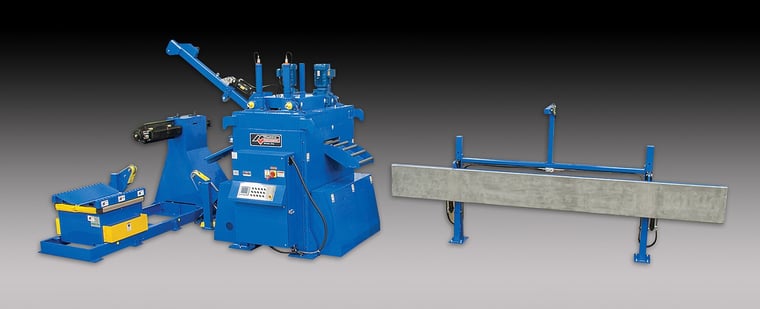
While both flatteners and precision straighteners are used in manufacturing to process materials such as sheet metal, bars and strips, they are not the same thing and do not return the same results.
A flattener focuses on creating a flat, uniform strip using fewer rollers with larger diameters, while a precision straightener is designed to achieve higher levels of accuracy and precision in removing shape defects in materials using a greater number of smaller diameter rollers and often incorporating advanced control systems.
In this article, we’ll dive into their differences in roller configuration, application and costs and take a look at steel coil processed via a basic flattener vs. a precision straightener.
Function & Roller Configuration of a Coil Flattener
- In material handling, a flattener is primarily used to remove irregularities and shape imperfections, such as coil set or crossbow. Its main objective is to create a flat and uniform strip.
- Flatteners often have fewer rollers with larger diameters compared to straighteners. The rollers are usually not designed with as much support or no support at all, allowing the rolls to potentially deflect and cause more shape defects.
Coil Flattener:
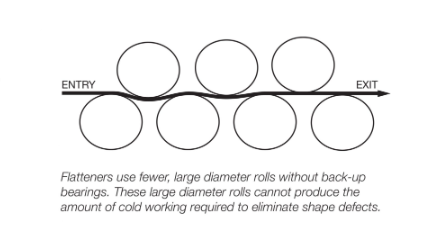
Function & Roller Configuration of a Precision Straightener
- Precision straighteners focus on removing the curvature or bend in a material to achieve a straight profile.
- Straighteners use a series of smaller diameter rollers to apply pressure and work the material past its yield point resulting in flat material. The additional rollers and higher precision components allow for greater control and accuracy in the straightening process. Some precision straighteners may also include control features to further improve performance and ease of use.
Precision Straightener:
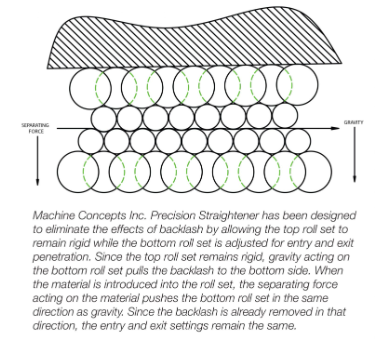
>>> Learn more about Machine Concepts precision straighteners.
Application & Cost of a Coil Flattener
- Flatteners are often employed as part of a cut-to-length line or a coil processing line to ensure flatness before further processing or forming.
- Due to their simpler design and construction, flatteners are more affordable than precision straighteners. They are often better suited for smaller operations or applications with less stringent flatness requirements.
Application & Cost of a Precision Straightener
- Precision straighteners are specifically designed for applications that require higher levels of accuracy and precision. They can achieve tighter tolerances and provide a more consistent and uniform output, making them ideal for industries such as aerospace, appliance, automotive and medical devices, where high-quality flatness is crucial.
- With higher precision components and more advanced features, precision straighteners typically result in a higher cost. However, the investment can be justified for manufacturers who require the highest level of precision and consistency in their straightening processes.
Steel Material Processed via a Coil Flattener
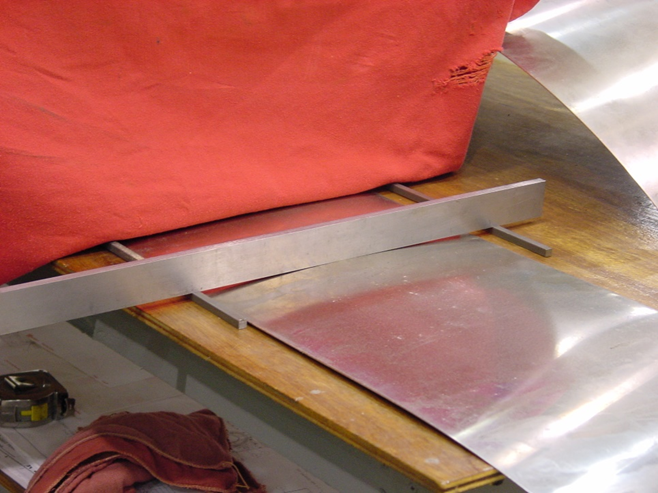
This steel was run through a basic flattener that had:
- Fewer rolls with a larger roll diameter
- Little to no support across the width of the roll
- Wider roll spacing
- Basic operator interface and functionality
- Lower percentage in yield of material
The result was:
- Material that was not completely flat, with coil set and crossbow defects in place. It also had the potential for edge wave defects if worked too hard.
Steel Material Processed via a Precision Straightener
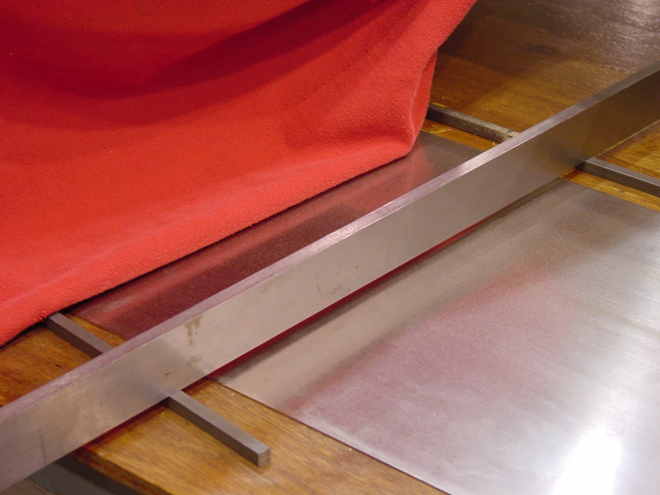
This steel was run through a Machine Concepts Precision Straightener that had:
- More rolls with a smaller roll diameter
- Support across the width of the roll to prevent roll deflection
- Tightly nested roll spacing
- Advanced operator interface and functionality that includes an on-screen calculator to help the operator find the target entry and exit settings of the machine for easy setup and desired flatness
- Higher percentage in yield of material
- Higher processing speeds that yield more production
The result was:
- Dead flat material with no coil set, no crossbow and low potential for edge wave defects and center buckle defects by reducing them.
In Summary,
When deciding between a straightener and a precision straightener, it is essential to consider the specific needs and requirements of your manufacturing process. If your application demands higher precision and tighter tolerances, a precision straightener may be a better fit. However, if moderate straightness is sufficient, a flattener or standard straightener could be more cost-effective and suitable for your needs.
Machine Concepts Precision Straighteners
Machine Concepts’ precision straighteners are known for eliminating coil shape defects that simple flatteners cannot remove. Parts that need to be flat stay flat, and round parts stay round. Contact us today to learn more.


